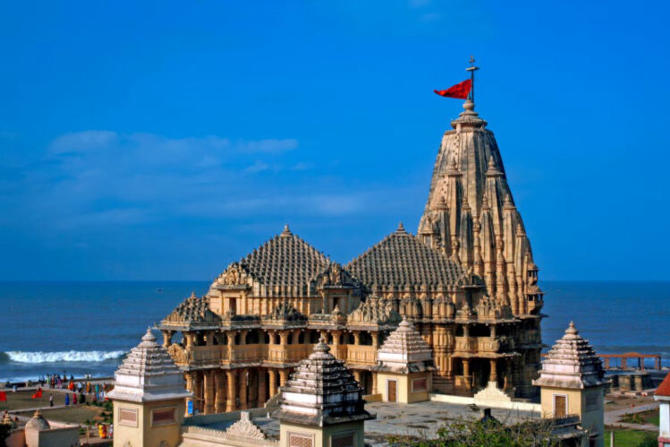Dwarka and Somnath are two of the most revered pilgrimage destinations in India, drawing thousands of spiritual seekers and history enthusiasts each year. A well-planned Dwarka Somnath Tour Package offers a remarkable journey into Gujarat’s rich cultural and religious heritage. But before you book your travel, it’s essential to know the best season to visit these iconic destinations to ensure a comfortable and memorable experience.
Understanding the Climate of Dwarka and Somnath
Both Dwarka and Somnath are located along the Arabian Sea in Gujarat and experience a similar coastal climate. The weather is typically divided into three main seasons:
- Summer (March to June)
- Monsoon (July to September)
- Winter (October to February)
Each season offers a unique charm, but weather conditions and crowd levels can vary greatly. Let’s take a closer look at what each season offers and why winter often emerges as the best time for most travelers.
Visiting During Summer (March to June)
The summer season in Dwarka and Somnath is marked by high temperatures ranging between 28°C and 42°C. While the religious significance of these places remains undiminished, the intense heat may make outdoor exploration less enjoyable, especially during the day.
Pros:
- Lesser tourist crowds
- Cheaper accommodation options due to off-season rates
Cons:
- Hot and humid weather may cause discomfort
- Daytime sightseeing can be challenging
For pilgrims who are comfortable with the heat or are limited to traveling during school vacations, summer is still manageable if planned wisely with early morning temple visits and indoor rest during the peak afternoon heat.
Experiencing Monsoon (July to September)
The monsoon brings a refreshing change to the arid landscape of Gujarat. With the first showers, the dry surroundings come alive with greenery. The temperature drops slightly, ranging between 25°C and 35°C, and the air becomes pleasantly cooler.
Pros:
- Lush green surroundings and cleaner atmosphere
- Beautiful coastal views after rains
Cons:
- Occasional heavy rainfall can disrupt travel plans
- Risk of waterlogging in some areas
Monsoon is a great time for nature lovers who enjoy the earthy fragrance of wet soil and dramatic coastal skies. However, those with rigid sightseeing schedules might find the rains slightly inconvenient.
Why Winter (October to February) is the Best Season
The winter months are widely regarded as the best time to visit Dwarka and Somnath. With temperatures ranging between 12°C and 28°C, the weather remains cool and pleasant, creating the perfect ambiance for temple visits, local sightseeing, and beach walks.
Pros:
- Ideal weather for exploring temples, ghats, and coastal areas
- Comfortable travel and outdoor activities
- Seasonal festivals like Diwali and Makar Sankranti add to the cultural experience
Cons:
- Higher hotel tariffs due to peak tourist season
- Need for advance bookings in popular months
Winter is also the time when several religious events and festivals are celebrated with great enthusiasm in Gujarat. Participating in these festivities gives tourists a chance to witness traditional rituals, vibrant processions, and local cuisine at its best.
A thoughtfully curated Gujarat Tour Packages during winter ensures that you experience the spiritual beauty and natural charm of the region without weather-related discomforts.
Best Time for Photography and Sightseeing
Travelers interested in photography and sightseeing will find the winter light conditions perfect for capturing the magnificent temples and coastal views. Sunrise and sunset at Dwarka’s Gomti Ghat and Somnath Temple are especially picturesque during this season, providing stunning backdrops for your travel memories.
Peak Travel Season: What You Should Know
If you’re planning to visit Dwarka and Somnath between October and February, here are a few tips to make the most of your journey:
- Book your Dwarka Somnath Tour in advance to avoid price hikes and limited availability.
- Carry light woolens, especially if you’re sensitive to cooler nighttime temperatures.
- Explore early in the day to enjoy the golden morning light and avoid crowds.
- Try local seasonal cuisine, like undhiyu, khichdi, and traditional sweets available in winter months.
Local Festivities You Shouldn’t Miss
Gujarat is a land of vibrant traditions, and winter is packed with colorful festivals that enhance the cultural value of your trip.
- Diwali (October–November): Celebrated with lights, rangoli, and temple rituals.
- Makar Sankranti (January): Famous for kite flying and special sweets like chikki and laddoos.
- Navratri (September–October): Though technically at the end of monsoon, it ushers in the winter vibe with folk dances and devotional events.
Participating in these festivals adds an extra layer of joy and immersion to your trip.
Conclusion
So, which is the best season to visit Dwarka and Somnath? While every season offers something unique, winter (October to February) is undoubtedly the most favorable time. The pleasant weather, vibrant festivals, and relaxed travel experience make it ideal for both first-time visitors and seasoned travelers.
Whether you are a pilgrim, a cultural explorer, or a leisure traveler, a Dwarka Somnath Tour planned in the winter months guarantees comfort, beauty, and spiritual fulfillment. And when you book as part of tailored Gujarat Tour , you can sit back and enjoy a hassle-free journey through this divine coastal circuit.







